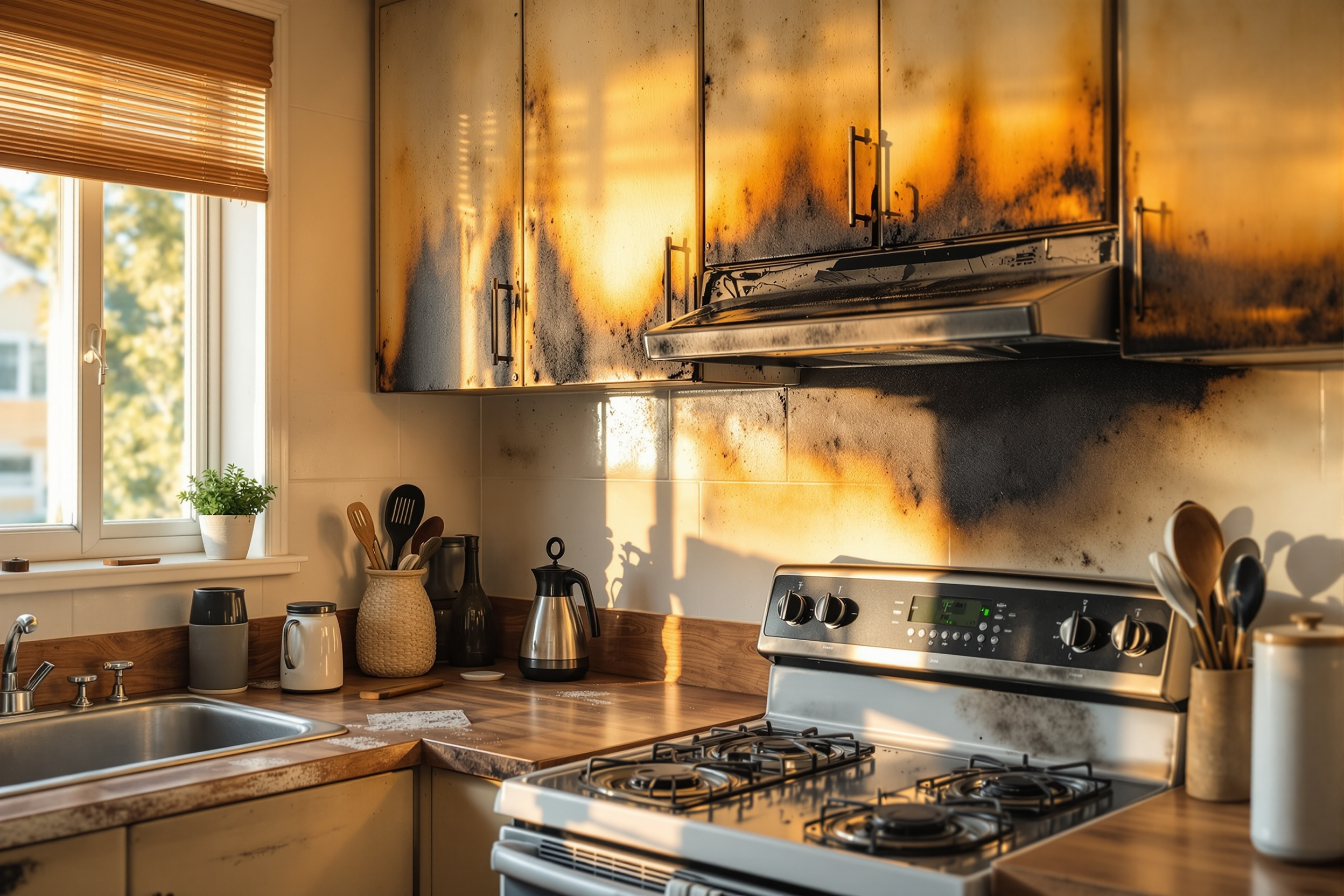Handling partial losses vs total losses as a landlord comes down to knowing how each impacts your property, tenants, and landlord insurance coverage. Partial losses may only require repairs to specific areas, while total losses often mean a complete rebuild. Understanding the difference helps you act fast, protect rental income, and maximize your insurance claim.
Partial Loss vs Total Loss in Rental Property
When a rental property is damaged, the extent of the damage determines whether it’s classified as a partial loss or a total loss. Understanding this distinction is crucial for landlords because it directly affects how insurance claims are handled, the cost of repairs, and the ability to generate rental income.
How Do Landlord Insurance Companies Define a Partial Loss?
Landlord insurance companies define a partial loss as damage that impacts only a portion of the rental property while leaving the rest of the structure intact and repairable. In these cases, the property remains usable after repairs, and the damage doesn’t result in a complete destruction of the building. Insurance carriers generally cover the cost of restoring the damaged areas to their previous condition, subject to policy terms and deductibles.
Examples include:
- Roof damage from a hailstorm that requires replacement of shingles but leaves the rest of the property livable.
- A kitchen fire that destroys cabinets and appliances without spreading to other rooms.
- Water damage in one section of the home that can be repaired without rebuilding the entire property.
The key factor is that the property can be repaired and returned to service for tenants, making partial losses less disruptive than a total loss.
What Situations Typically Lead to the Total Loss of a Rental Property?
A total loss occurs when the damage to a rental property is so extensive that it is deemed uninhabitable or beyond the point of practical repair. In these situations, insurance companies may classify the property as a total loss if the cost to restore it exceeds its insured value or if the structure is completely destroyed.
Examples include:
- A fire that burns down the entire building.
- Severe flooding that renders the foundation and structure unsafe.
- Natural disasters such as tornadoes or earthquakes that demolish most of the property.
In a total loss scenario, insurance typically covers the replacement cost value or actual cash value of the property, depending on the policy. For landlords, this means a complete halt to rental income until the property is rebuilt or replaced, making landlord insurance essential for financial recovery.
Can You Claim Insurance for Both Partial Losses and Total Losses?
Yes, landlord insurance typically covers both. Partial losses are reimbursed for repair costs to damaged areas, while total losses often trigger payouts for the property’s full replacement or cash value. Many policies also include lost rental income, helping landlords stay financially protected in either scenario.
How Does a Partial Loss Affect Landlord Insurance Payouts?
With a partial loss, landlord insurance usually covers the repair or replacement costs of the damaged portion of the property. Payouts are limited to restoring the affected areas, minus deductibles, and can also include loss of rental income if tenants are temporarily displaced.
Example: If a kitchen fire damages cabinets and appliances but leaves the rest of the home intact, your insurance would pay for the kitchen repairs and may cover lost rent if tenants can’t use the space during restoration.
What Steps Should Landlords Take After a Partial Loss?
When a partial loss occurs, acting quickly helps protect both your property and your insurance claim. Here are the key steps:
- Ensure Safety First: Confirm tenants are safe and prevent further damage, such as shutting off water or electricity if needed.
- Document the Damage: Take detailed photos, videos, and notes of all affected areas before starting any repairs.
- Notify Your Insurance Company: Report the loss immediately and provide all documentation to speed up the claim process.
- Mitigate Further Damage: Make temporary fixes (like covering a damaged roof) to stop the situation from worsening.
- Coordinate Repairs: Hire licensed contractors to restore the damaged areas while keeping receipts for insurance reimbursement.
- Track Rental Income Impact: If tenants can’t use part of the property, note the lost rent for a potential loss of rental income claim.
What Should Landlords Do When Facing a Total Loss?
A total loss can feel overwhelming, but taking the right steps ensures a smoother recovery and faster insurance payout:
- Prioritize Safety: Evacuate tenants and secure the property to avoid injuries or further hazards.
- Notify Your Insurance Company Immediately: Report the total loss and start the claims process as soon as possible.
- Document Everything: Take photos, videos, and written records of the destruction to support your claim.
- Secure the Property: Prevent trespassing or additional damage by boarding up or fencing off the area if safe to do so.
- Work With Professionals: Coordinate with adjusters, contractors, and restoration experts to plan for rebuilding or replacement.
- Track Financial Losses: Keep detailed records of lost rental income and expenses incurred during the displacement period.
Protect Your Rental Investment with Obie
Whether you’re dealing with partial losses or total losses, the right insurance makes all the difference. Obie provides tailored landlord insurance that covers property damage, lost rental income, and more—so you can focus on rebuilding, not stressing over costs. With fast quotes and coverage available across the U.S., Obie helps landlords stay secure and profitable no matter what happens. Get a free landlord insurance quote today.
FAQs
What is a partial loss in landlord insurance?
A partial loss is defined as damage that affects only a portion of the rental property, leaving the rest of the structure intact and repairable. The key factor is that the property can be repaired and returned to service for tenants. Examples include roof damage from a hailstorm or a small kitchen fire that is contained to one room.
What is considered a total loss for a rental property?
A total loss occurs when damage is so extensive that the property is uninhabitable or beyond practical repair. This happens when the cost to restore the property exceeds its insured value or the structure is completely destroyed, such as by a major fire, severe flood, or tornado.
How do insurance payouts differ for partial vs. total losses?
For a partial loss, the insurance payout typically covers the cost to repair or replace only the damaged portion of the property, minus the deductible. For a total loss, the payout is much larger and may cover the property’s full replacement cost or its actual cash value, depending on the specifics of the policy.
What should a landlord do immediately after a partial loss?
The first priorities are to ensure tenants are safe and to prevent further damage by making temporary fixes (like covering a damaged roof). You should then thoroughly document the damage with photos and videos before notifying your insurance company to begin the claims process.
What are the key steps for a landlord facing a total loss?
After a total loss, you must prioritize safety by evacuating tenants and securing the property. Report the loss to your insurance company immediately. It is crucial to document everything, work closely with insurance adjusters and contractors, and keep detailed records of all financial losses, including lost rent.







